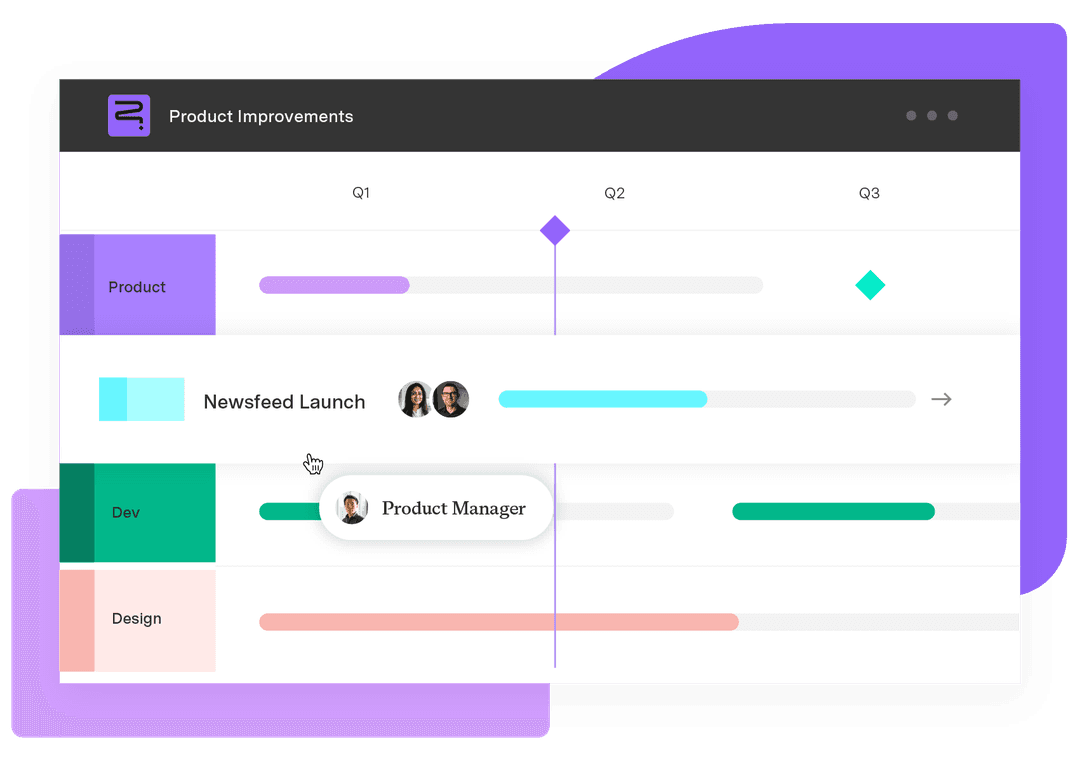Traceability matrix: Track requirements with clarity
Tempo Team
If you’ve ever felt like your requirements are scattered across emails and meeting notes, you’re not alone. Keeping track of one project requirement is manageable, but keeping track of a hundred is when things get tricky.
As projects grow, so does the chance that important details get lost. A requirements traceability matrix (or RTM) helps you bring all those pieces together. It’s a simple way to connect the dots between what you need and how you test so your team stays aligned and your project keeps its momentum.
What’s a traceability matrix?
At its core, a traceability matrix links requirements to ongoing work. It connects the dots between your documents, designs, code, test cases, and final deliverables. This gives teams a clear view of how every part of the project supports the original goals.
This visibility is key to strong requirements management. Whether you're in software development, product development, or management, helps ensure that nothing slips through the cracks.
If you’re starting from scratch, a requirements traceability matrix template can help you build your first version quickly. And looking at a real-world traceability matrix example can give you a feel for how teams structure their columns, with items like requirement ID, descriptions, related tasks, status, and owners.
4 types of traceability
Depending on your team’s goals and where you are in the development lifecycle, different types of traceability help you connect the dots between requirements, deliverables, and test cases.
Here are the four most common types you’ll come across in project management and software development, along with how they help you stay in control:
1. Forward traceability
Forward traceability maps each requirement to the ongoing work to implement it. It answers questions like, “Did we build something for every requirement?” or “Is anything missing?”
This type is useful when validating that all your functional requirements made it into the final product.
2. Backward (or reverse) traceability
With reverse traceability, you take each deliverable, like a line of code or a feature, and trace it back to the original requirement it was meant to fulfil.
This prevents extra work that might seem helpful but doesn’t align with the business's needs. It’s also very useful during audits or reviews, where you need to prove that everything built has a clear purpose linked to the original requirement document or RTM.
3. Bidirectional traceability
Bidirectional traceability connects requirements forward to implementation and backward from implementation to requirements.
This is the most comprehensive approach and is valuable when working on complex products or under strict compliance rules. A strong requirements traceability matrix that supports this mapping helps you run a thorough impact analysis and complete your RTM coverage from start to finish.
4. Vertical vs. horizontal traceability
This distinction focuses on the direction your trace goes:
Vertical traceability shows how a high-level business requirement filters down to design specs, test cases, and even deployment steps. It gives you a top-to-bottom view of your project.
Horizontal traceability looks side to side, helping you track dependencies between teams or phases within the same level of the process. It’s great for coordinating across teams or identifying when one change could impact multiple areas.
What to include in a traceability matrix
A traceability matrix may look like a basic table or spreadsheet, but it’s a high-value tool for managing requirements and maintaining project alignment throughout the development lifecycle.
Here are some core elements that bring a traceability matrix to life:
Requirement ID
Every requirement should have a unique identifier – something like “REQ-001” or “FR-102.” This might seem minor, but it’s crucial for traceability. When your team juggles dozens (or hundreds) of requirements, the requirement ID makes it easy to search for, refer to, and connect specific work items or discussions to the right task.
Pro tip: Use a naming convention for requirements across your team to avoid confusion during audits, testing, or status reviews. Make sure this convention is consistent and visible.
Requirement description
This column offers a short, clear explanation of each requirement's purpose. Whether it's a functional requirement like “User must be able to reset password via email” or a nonfunctional requirement like “Page load time should be under 2 seconds,” the description guarantees everyone – from developers to QA to stakeholders – understands the intent.
Source
Where did the requirement come from? It might be a user request, a business goal, or an insight from the product team. Documenting the source makes it easier to trace requirements back to stakeholder needs or compliance standards.
Related design elements or work items
A big part of traceability is mapping requirements to the actual design documents, user stories, wireframes, or tickets that bring them to life. This creates a bridge between what you need and what you’re building.
This approach is handy in software development environments using tools like Jira or Azure DevOps, where linking work items adds visibility and reduces duplication.
Test cases or validation steps
You can’t confirm that a requirement is complete without a way to test it. Linking to test cases ensures every piece of work is verifiable and supports a smoother validation process.
Status column
Use a status column to indicate if the requirement is “Proposed,” “In progress,” “Completed,” “Tested,” or “Blocked.” This column helps project managers and stakeholders quickly assess the project’s current state and identify issues before they become risks.
Owner or stakeholder contact
Who’s responsible for the requirement? Listing an owner clearly establishes accountability and simplifies communication. If questions or blockers arise, your team knows exactly who to contact.
This is useful in large teams or cross-functional environments where communication gaps can lead to delays.
Optional columns to consider
Depending on your project management process, you might also include:
Priority: Helps teams focus on high-impact requirements first
Risk level: Flags areas with high complexity or uncertainty
Implementation date: Supports timeline tracking and forecasting
Change history: Useful for change management and audits
Validation results: Document the outcome of testing to close the loop
Advantages of a traceability matrix
A well-structured RTM helps your team stay focused, aligned, and on track. Here’s how:
Ensures full requirement coverage
When juggling multiple requirements, it’s easy to miss something. A traceability matrix helps you connect the dots between each requirement ID, related design elements, test cases, and their current status. This gives you a bird’s-eye view of your project and helps confirm that everything in your requirement document is accounted for.
Prevents scope creep
Projects have a way of growing beyond their original plan. With a trace matrix, you have a clear record of what you agreed upon. You can quickly spot when a new request doesn’t align with your initial specifications or project scope, helping you control changes before they derail your timeline or budget.
Supports compliance and audits
For industries with strict regulations, showing that your project meets all requirements isn’t optional – it’s often mandatory to secure funding. A traceability matrix provides a clear trail from business requirements to implementation and validation, making it easier to meet industry standards and prove compliance.
Improves testing efficiency
QA teams often rely on RTM templates to link test cases directly to specific software requirements. This ensures tests are purposeful and thorough. It also helps identify untested areas before launch, improving overall validation and product quality.
Helps with impact analysis
Need to update a requirement mid-project? With a traceability matrix, you can instantly see what else might be affected, whether it’s a design, code, or test. That makes change management less risky and much more strategic.
Builds stakeholder confidence
When clients or team leads ask “Are we on track?”, you can confidently show them. A clear, up-to-date traceability matrix makes it easy to share progress and highlight how your work relates to business goals.
Strengthen requirement oversight with Tempo
Minding every requirement, every change, and every test case can be a struggle, especially when your team is moving fast. Tempo helps you keep up and cut through the chaos.
With Strategic Roadmaps, you can see how work aligns with your business goals at every stage. And Custom Charts for Jira makes it easy to validate progress faster and keep stakeholders aligned – without getting buried in spreadsheets.
Ready to streamline your traceability process and gain clarity across the project lifecycle? Try Tempo and keep your projects on track.












































